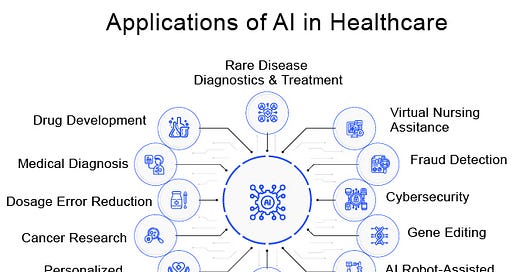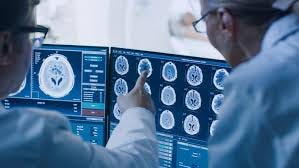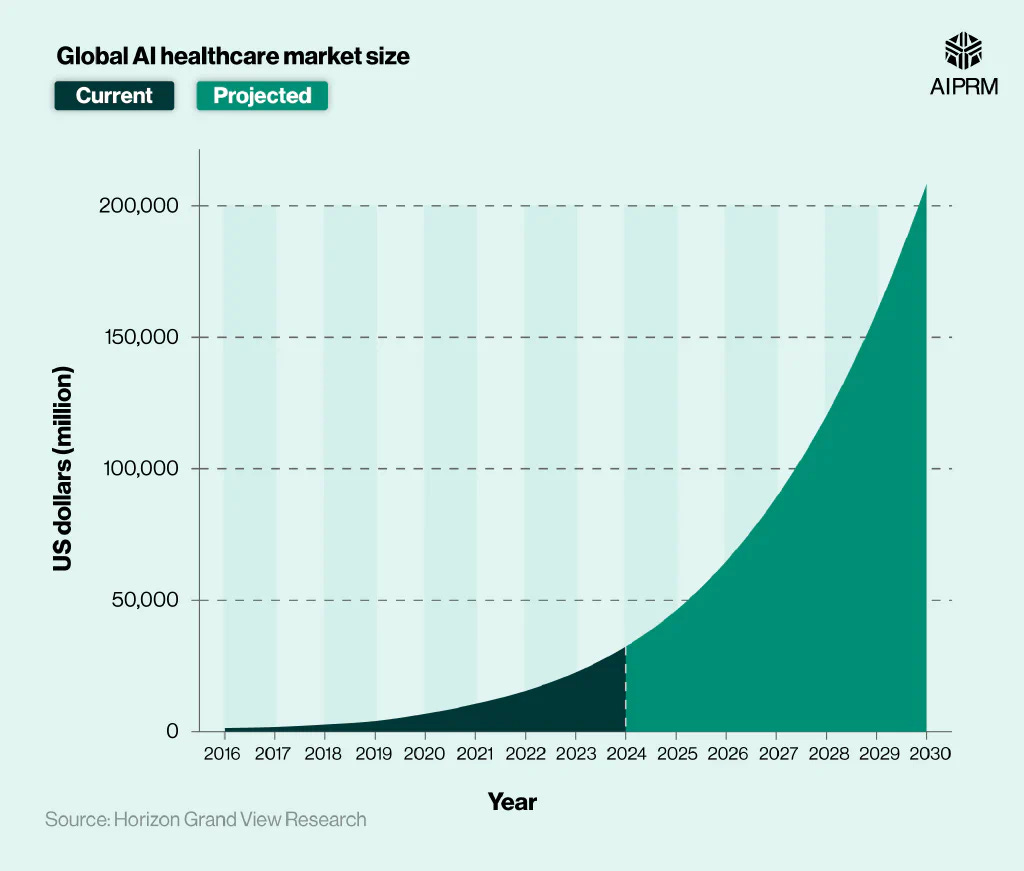The Impact of AI on Public Healthcare Companies: Diagnoses, Treatments, and Growth Potential
The advent of artificial intelligence (AI) has begun reshaping industries worldwide, and healthcare stands at the forefront of this transformation. Healthcare companies are uniquely positioned to benefit—or face challenges—from the widespread adoption of AI technologies. This article explores the implications of AI on diagnostics, treatment proliferation, profit margins, and overall growth, with a particular focus on how these advancements might shape the financial outlook for major healthcare corporations.
Faster Diagnoses and Their Economic Implications
AI's capability to process vast amounts of medical data, recognize patterns, and identify anomalies far exceeds human potential. Technologies like machine learning algorithms and natural language processing are already demonstrating their ability to:
Diagnose Illnesses Faster: AI can analyze medical images, lab results, and patient histories with exceptional speed and accuracy. For instance, AI-driven tools have achieved remarkable success in detecting cancers, heart conditions, and rare diseases that might elude human practitioners.
Broaden Access to Diagnosis: By reducing the cost and time required for diagnosis, AI can make healthcare more accessible. This increased accessibility will likely result in a higher volume of diagnosed cases.
Impact on Healthcare Companies:
Increased Demand for Treatments: As more patients receive timely diagnoses, the demand for associated treatments will rise, creating growth opportunities for companies producing pharmaceuticals, medical devices, and therapeutic solutions.
Cost-Efficiency Gains: Reduced diagnostic times and lower error rates can translate into cost savings for healthcare providers, potentially increasing profit margins.
Expanded Markets: Companies with AI-integrated diagnostic tools can capture new markets, including underserved or remote populations.
AI in Treatment Development and Delivery
AI is also revolutionizing how treatments are developed and administered. Key areas of impact include:
Accelerated Drug Discovery: AI-powered platforms can identify drug candidates and predict their efficacy with unprecedented speed. This reduces the time and cost of bringing new drugs to market.
Personalized Medicine: By analyzing genetic, environmental, and lifestyle data, AI can help tailor treatments to individual patients, improving outcomes and reducing waste.
Enhanced Treatment Monitoring: AI tools can monitor patients in real time, allowing for dynamic adjustments to treatment plans.
Impact on Healthcare Companies:
Revenue Growth: The acceleration of drug discovery and personalized medicine offers pharmaceutical companies new revenue streams.
Competitive Advantages: Companies that integrate AI into their operations are likely to outpace competitors in innovation and efficiency.
Potential Challenges to Profitability: Faster cures or more effective treatments could reduce the duration of chronic disease management, potentially affecting long-term revenue models for some therapies.
Balancing Growth and Ethical Considerations
The potential for AI to enhance diagnosis and treatment presents significant growth opportunities for healthcare companies. However, there are ethical and economic tensions:
Growth Through Treatment Proliferation: The discovery of undiagnosed illnesses can lead to an increase in treatment sales, boosting revenues for drug manufacturers and medical device companies.
Impact of Cures on Profit Models: While curing diseases aligns with societal good, it may shorten the revenue lifecycle of drugs designed for chronic conditions. Companies may need to pivot toward diversified portfolios to mitigate this risk.
Case Studies and Examples
Pfizer and Drug Discovery: Pfizer’s collaboration with AI firms has expedited its drug development processes, reducing R&D costs and time-to-market for new drugs.
Intuitive Surgical and AI-Driven Robotics: The company’s AI-enhanced robotic surgical systems have seen increased adoption, driving revenue growth.
UnitedHealth Group: AI-enabled data analytics are helping UnitedHealth improve patient care and operational efficiency, enhancing profitability.
Market Growth Projections
According to industry analysts, the global healthcare AI market is expected to grow at a compound annual growth rate (CAGR) of over 40% through 2030. This growth will likely be reflected in:
Stock Performance: Public healthcare companies that embrace AI could see significant valuation increases as investors recognize the growth potential.
Profit Margins: Improved efficiency and increased treatment volumes are likely to bolster profit margins, particularly for companies in diagnostics, pharmaceuticals, and medical devices.
Conclusion
AI presents a double-edged sword for publicly traded healthcare companies. On one hand, it offers unparalleled opportunities for growth through faster diagnoses, broader access, and innovative treatments. On the other, it challenges existing revenue models by potentially accelerating cures. Companies that strategically adopt AI and align their business models with these new realities are poised to thrive in an increasingly AI-driven healthcare ecosystem. Investors should closely monitor how these companies integrate AI into their operations, as it will undoubtedly shape their future growth trajectories.







